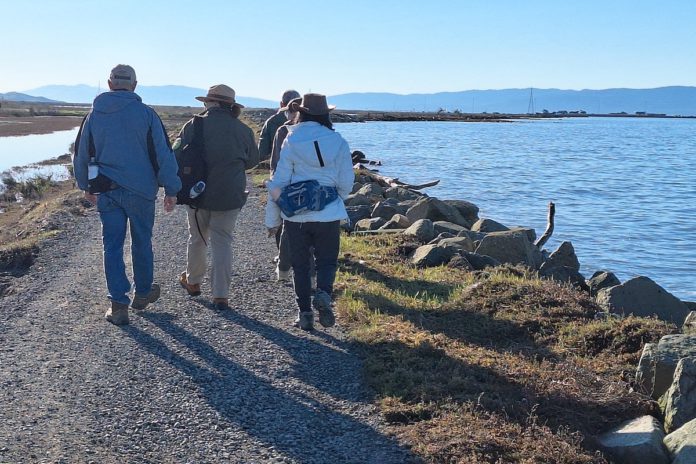Many coastal Bay Area residents have seen it: water levels gently rising, encroaching water on beaches or splashing waves of water flowing across sidewalks and onto streets. This is caused by small tides created by gravitational pull between the orbiting moon and the Earth.
But sometimes, the water rise is noticeably higher and more widespread. According to Erin Blackwood, a naturalist with East Bay Regional Park District, people often refer to these as a “king tide.” But the scientific name is perigean spring tide, and it happens each year during winter months.
“It’s usually in January when the moon is actually closest to the Earth and the Earth is closest to the sun,” Blackwood said, adding that a full or new moon (called spring) becomes more closely aligned with the Earth and sun. This triple lineup boosts gravitational pull and raises tides, which generally last for about an hour before retreating to low tide about six hours later.
A close-up view
To get a close look at the most recent king tide rising, a small group of East Bay residents gathered Saturday, Jan. 11 to join Blackwood on a King Tide Walk at the Hayward Recreational Shoreline. With the tide expected to crest to about 8.6 feet around 9:30am, Blackwood led visitors along the park’s gravel trail while pointing to signs of the incoming tide: water moving quickly inland, small ripples lapping against the shore and wildlife hunting for food in quickly flowing water.
“It was amazing to see the impact of the high tide,” visitor Ed Byrne of Castro Valley said at the end of the walk. He noted that the weather was a little calmer than he expected, adding that this was the first time he had been to the shoreline specifically to see a king tide, and he appreciated the information Blackwood provided.
Byrne’s wife Holly agreed: “It was educational…the sun, moon and Earth and how they impact the health and ecological system.” She added that she also enjoyed seeing wildlife including egrets, shorebirds, turkey vultures and even a bald eagle soaring overhead.
A preview of sea level rise
King tides have been occurring for millennia and are not a result of global warming, Blackwood said. However, she added that climate change is having an impact on sea level rise. “With more carbon dioxide in the atmosphere, it gets dissolved into the ocean, then the ocean warms and water expands, causing sea level rise.
“What’s been happening with king tides in recent years is that it’s kind of a preview of what sea level rise will be like,” Blackwood continued. “These king tides have been getting a little higher every year and causing flooding in some places.”
Blackwood said plants and wildlife can be affected by higher water levels when salty tidewater floods farther inland than usual and damages plants or pushes wildlife away or compromises their food supply. For people, she said it’s important to plan and adapt to rising sea levels. Preventive measures can help—like creating wetland areas to absorb some king tides and other nature-based projects. Additionally, development may have to be moved farther back from the shoreline.
Get involved
Blackwood said people can help track rising king tides by sending photos to the California King Tides project sponsored by the California Coastal Commission. Details are at www.coastal.ca.gov/kingtides/.




